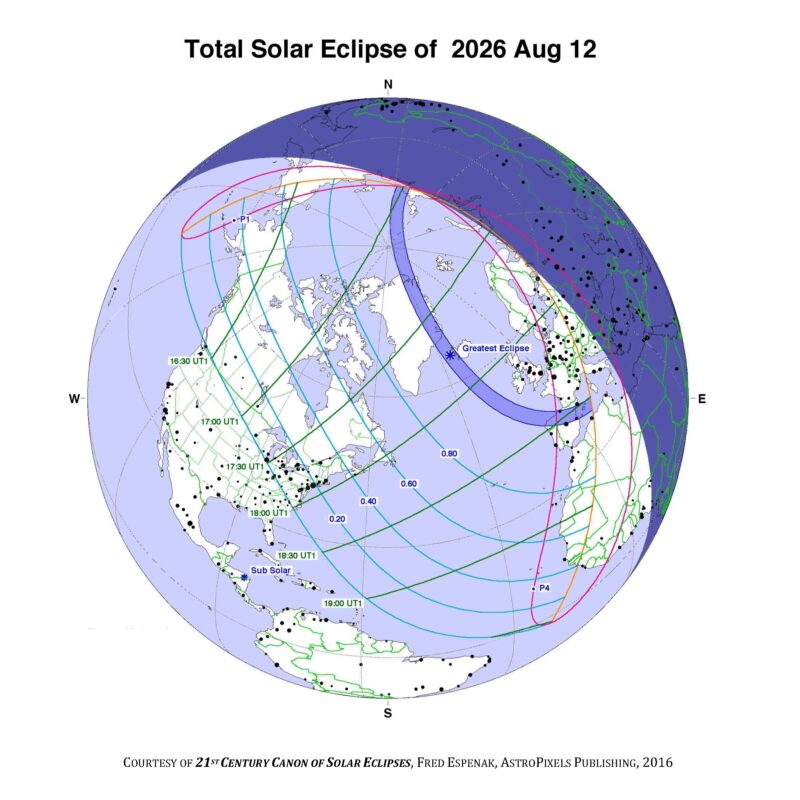
When is the next total solar eclipse?
Was witnessing the April 8, 2024, total solar eclipse a life-changing event for you? Are you ready to become an eclipse chaser? Then you need to know when the next total solar eclipse is! Here’s a list of the upcoming total solar eclipses through 2050.
On August 12, 2026, a total solar eclipse will start in Northern Russia, circle the Arctic, and then sweep across Greenland, the western edge of Iceland (including Reykjavik) and Spain, including the Balearic Islands. At its longest, the eclipse will last two minutes and 18 seconds.
August 2, 2027
The following total solar eclipse is a little less than a year later but will last much longer, at six minutes and 23 seconds maximum. Spain will get to see totality again, though just the southern tip. Across the Mediterranean Sea, totality will sweep through the countries in Northern Africa, plus Saudi Arabia, Yemen and Somalia.
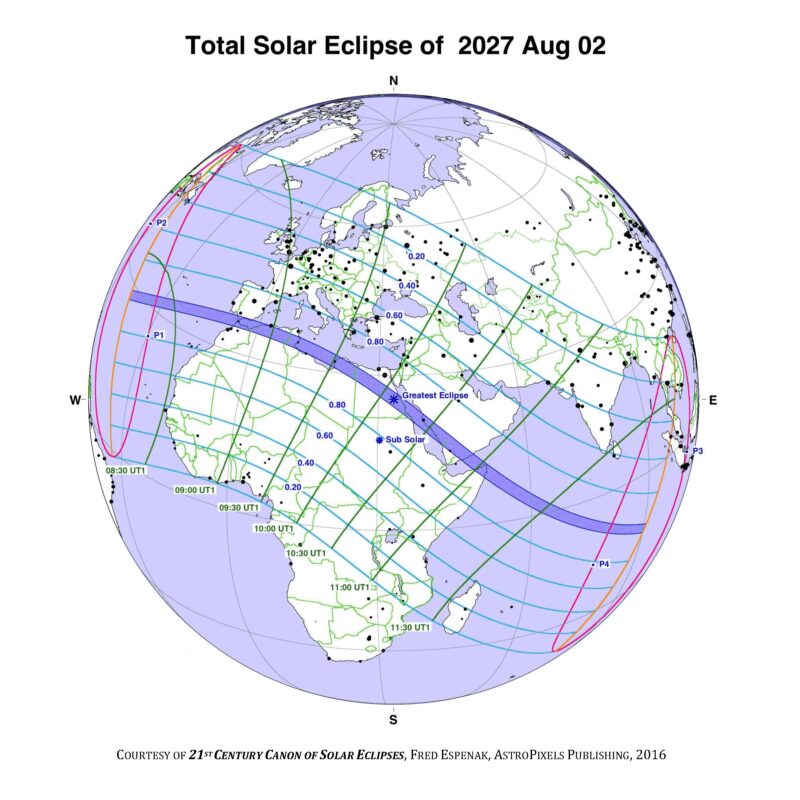
July 22, 2028
Again, another total solar eclipse occurs a bit less than a year later. This is another long one, with a maximum duration of five minutes and 10 seconds. The path of totality begins in the Indian Ocean, cutting across Australia and southern New Zealand.
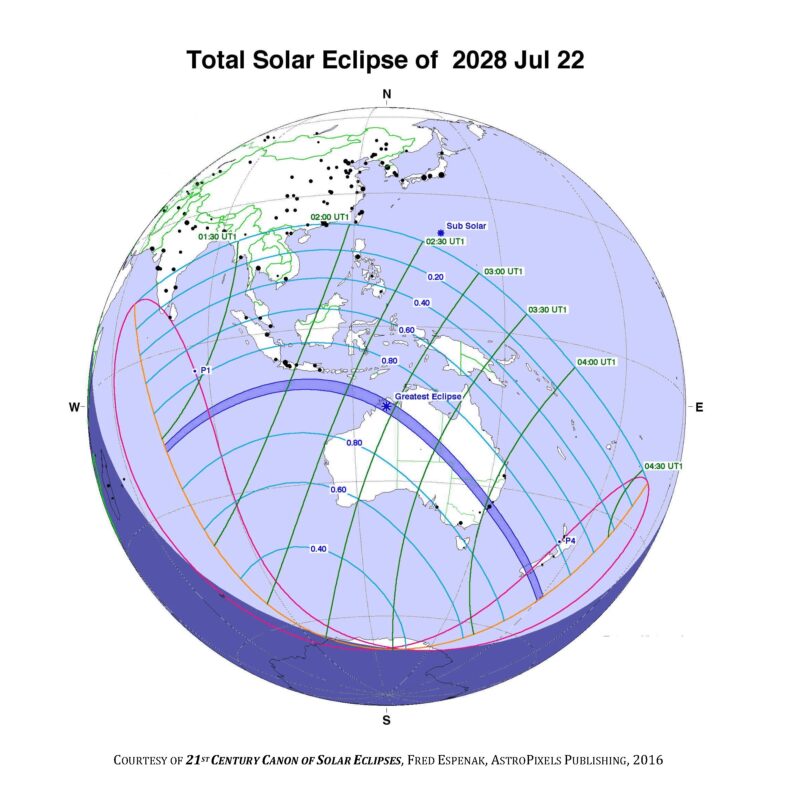
November 25, 2030
After a one-year drought, a total solar eclipse returns in late 2030, traveling across southern Africa, the Indian Ocean and part of Australia. At its longest, totality will last three minutes and 43 seconds.
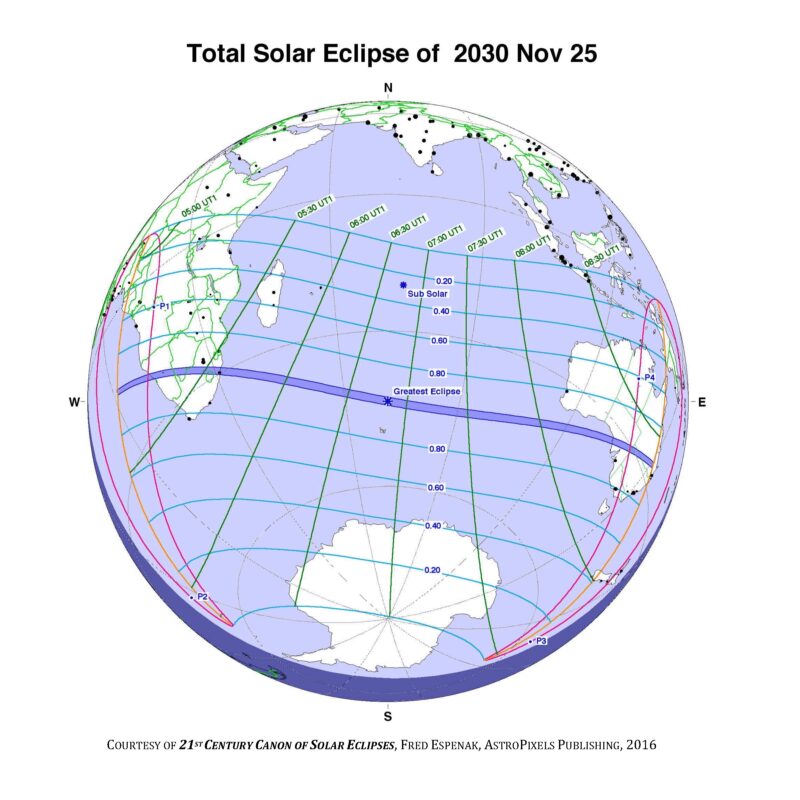
March 30, 2033
After another total solar eclipse drought, the next one finally returns to North America … but only to the far reaches of Alaska. The eastern tip of Russia will also see this eclipse. It’s a shorter eclipse, at two minutes and 37 seconds max.

March 20, 2034
Less than a year later, a total solar eclipse crosses Africa, the Middle East, India and China. This eclipse will be four minutes and nine seconds at its longest.
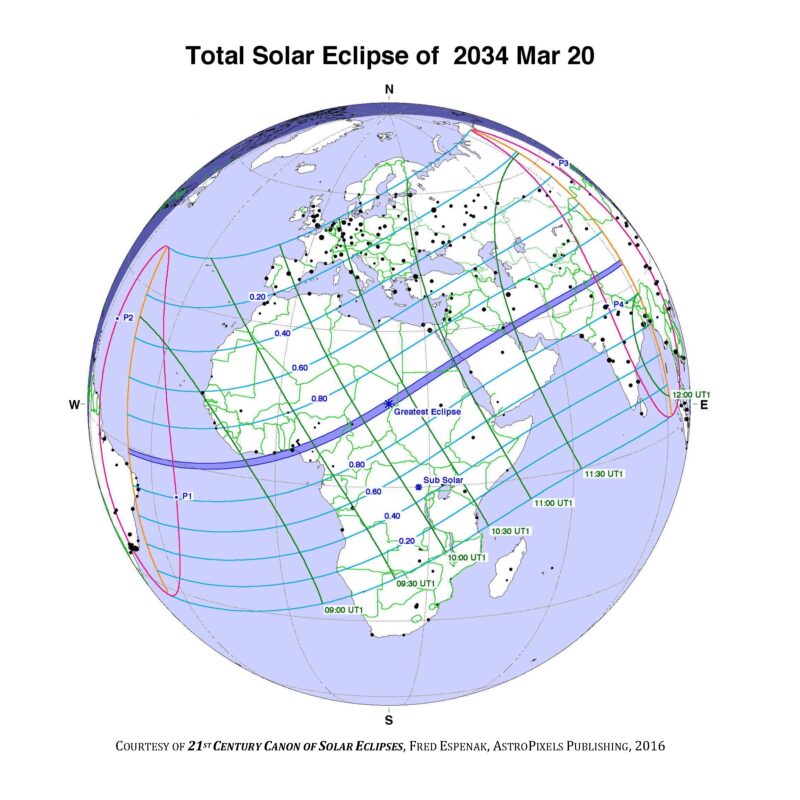
September 2, 2035
The 2035 total solar eclipse crosses some large cities, including Beijing in China, Pyongyang (the capital of North Korea), and Nagano and the northern suburbs of Tokyo in Japan. The maximum duration is two minutes and 54 seconds.
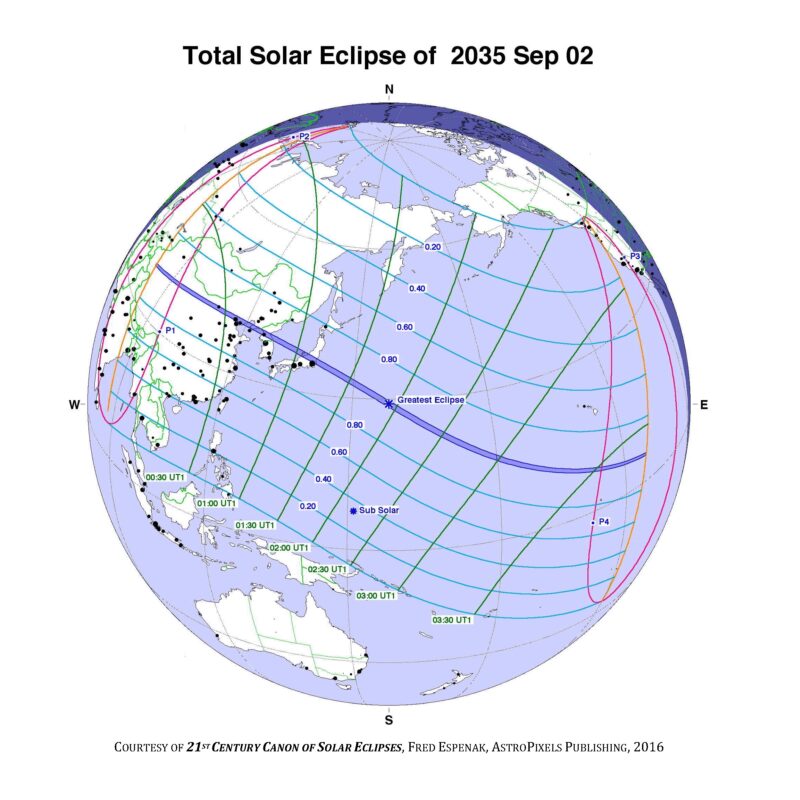
July 13, 2037
Australia and New Zealand are the site of two total solar eclipses in a row. The first is a mid-winter eclipse in the Southern Hemisphere that will last, at its longest, three minutes and 58 seconds.

December 26, 2038
For the second year in a row, Australia and New Zealand host a total solar eclipse. This one is a bit shorter, lasting two minutes and 18 seconds at the most.

December 15, 2039
Then an eclipse sweeps across mostly barren Antarctica, though during its summer. This eclipse drops below two minutes, with its maximum duration being just one minute and 51 seconds.
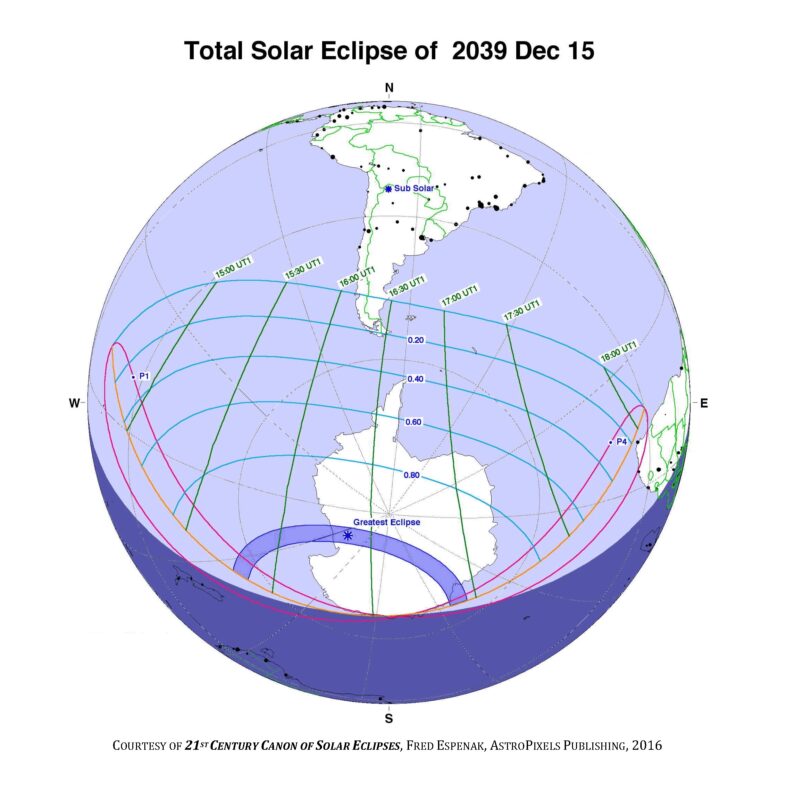
Total solar eclipses from 2041 to 2050
If you’re still looking for the next total solar eclipse to reach the lower 48 states, you’ll find it in the map below. The blue paths show total solar eclipses. (Red shows annular eclipses.) In 2044, a total solar eclipse touches Montana and North Dakota. And in 2045, a total solar eclipse crosses the United States from the Pacific to the Atlantic.
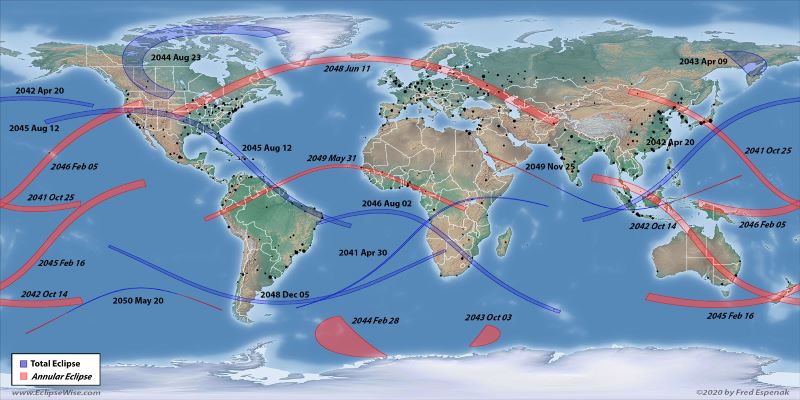
Bottom line: When is the next total solar eclipse? If the April 8, 2024, total solar eclipse gave you the bug for eclipse-chasing, you’ll want to know: Find out here!











